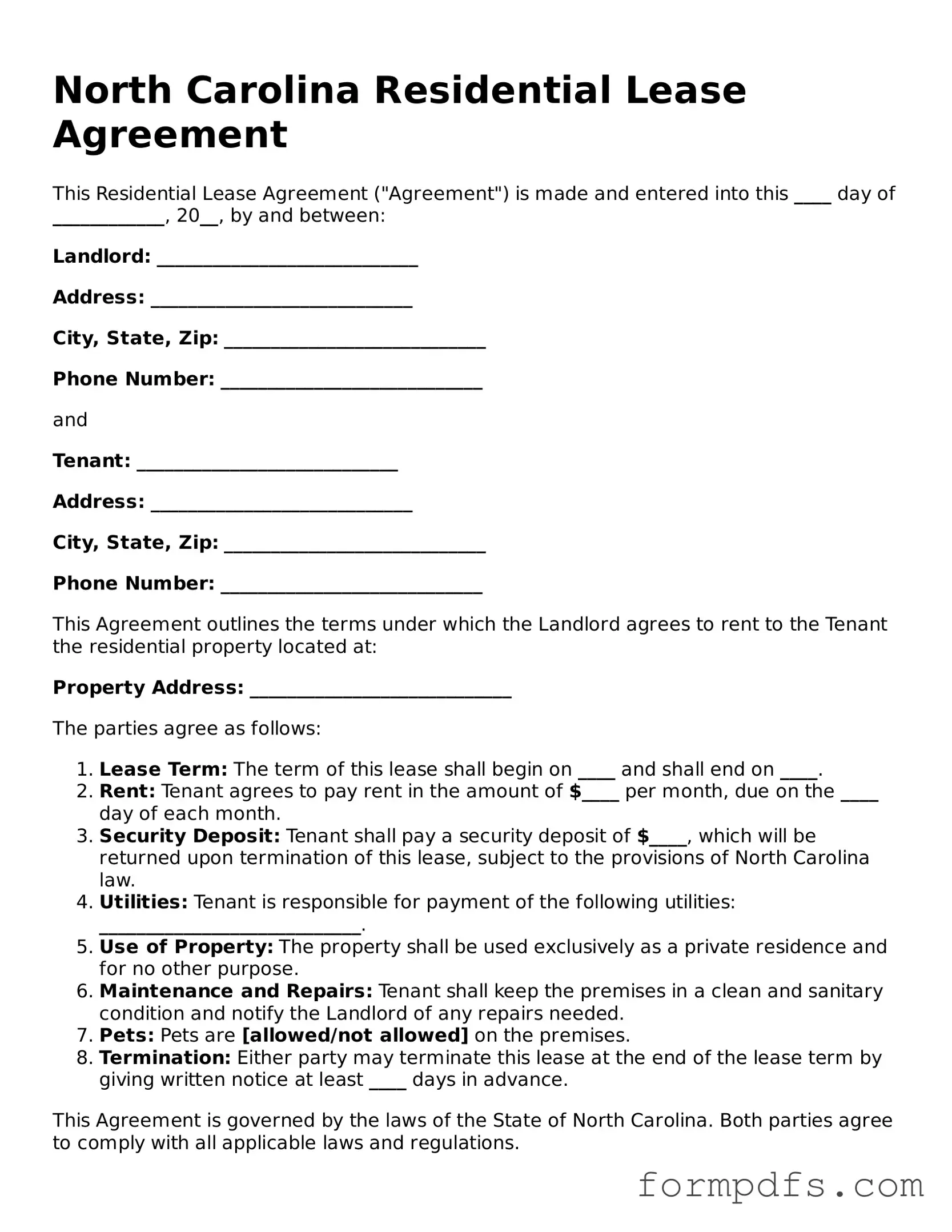What is a North Carolina Residential Lease Agreement?
A North Carolina Residential Lease Agreement is a legal document that outlines the terms and conditions under which a landlord rents property to a tenant. This agreement serves as a binding contract that details the rights and responsibilities of both parties involved. It typically includes information such as the duration of the lease, rental payment amounts, security deposits, maintenance obligations, and rules regarding property use. Understanding this document is essential for both landlords and tenants to ensure a clear and mutually beneficial rental experience.
What are the essential components of a Residential Lease Agreement in North Carolina?
Several key elements must be included in a North Carolina Residential Lease Agreement. First, the names of the landlord and tenant should be clearly stated, along with the property address. The lease term, whether it is for a fixed duration or month-to-month, must be specified. Additionally, the amount of rent, payment due dates, and methods of payment should be outlined. It's also important to include details about security deposits, maintenance responsibilities, and any specific rules or restrictions regarding the use of the property. By including these components, both parties can have a clearer understanding of their obligations.
Can a Residential Lease Agreement be modified after it has been signed?
Yes, a Residential Lease Agreement can be modified after it has been signed, but both the landlord and tenant must agree to the changes. Any modifications should be documented in writing to ensure clarity and prevent misunderstandings. It is advisable to create an amendment that outlines the specific changes being made to the original lease. Both parties should sign this amendment to acknowledge their agreement to the new terms. Verbal agreements regarding changes may not be enforceable, so written documentation is crucial for legal protection.
What happens if a tenant wants to break the lease early?
If a tenant wishes to break the lease early, they should first review the terms of the lease agreement, as it may contain specific provisions regarding early termination. In many cases, the tenant may be required to provide written notice to the landlord and may also be responsible for paying rent until a new tenant is found or until the lease term ends. Some leases include an early termination clause that allows tenants to exit the agreement under certain conditions, often for a fee. Open communication with the landlord is key, as they may be willing to negotiate terms that are agreeable to both parties.
